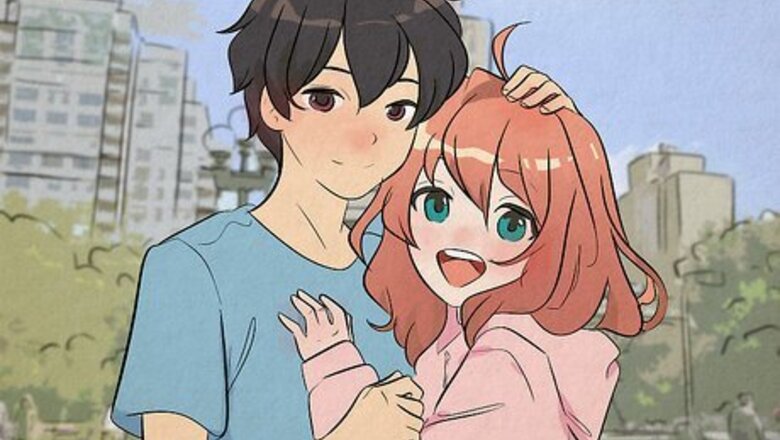
views
What is a deredere character?
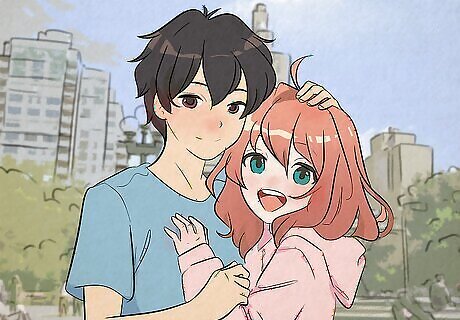
Deredere are extra-affectionate characters who don’t hide their feelings. “Deredere” is a character archetype, most commonly found in anime and manga. Deredere characters are intensely romantic, affectionate, and very lovey-dovey; if they’re in love, it’s usually pretty obvious. They can also be clingy and openly loving toward their partners, always wanting to be with them and showering them with adoration. Deredere characters are especially doting; they often care not just for their love interest, but also for the other people in their lives. They’d put other people’s happiness before their own! Deredere characters also crave intimacy and closeness with their love interest. They often behave in a “cute” way to get their love interest’s attention (and be pampered with affection in return).
Key Characteristics of a Deredere Character
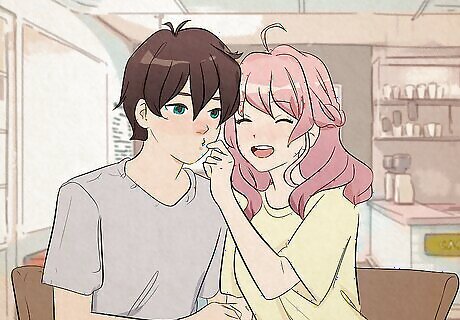
Deredere flatter and praise their love interest. One telltale sign of a deredere is near-constant fawning; they’ll always look for ways to make their partner feel loved, especially if it involves praising them (even for the littlest thing) or pulling off romantic gestures and expressions of affection. You might see a deredere telling their love interest that they’re doing amazing at something all the time or reminding them how great they look daily. Deredere will also make a point to show their love interest how important they are, often by prioritizing their love interest over their own desires. Since deredere are open with their affections, it’s also common to see them bragging about how amazing their love interests are to other people (including friends and family).
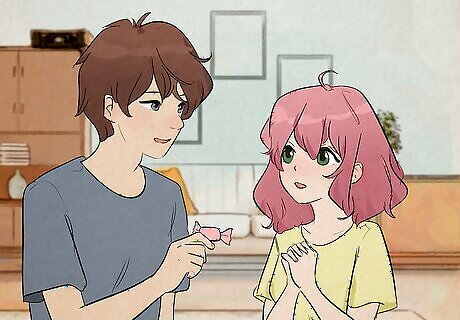
They want their love interest to spoil them in return. So, deredere characters act really cutesy and sweet to get their love interest (unconsciously) acting more like a deredere toward them, too. For instance, a deredere might tell their love interest how much they love them or how attractive they are, or rely on that love interest for certain things they’d have trouble doing themselves. Additionally, a deredere character might tell their love interest how much they mean to them, or find ways to surprise them with gifts and gestures. Of course, some deredere characters just come right out and tell their love interest that they’d like a little pampering and affection. The great thing about deredere is that they don’t expect pampering and give nothing in return; they want to spoil their love interest with affection as much as they want to be spoiled.
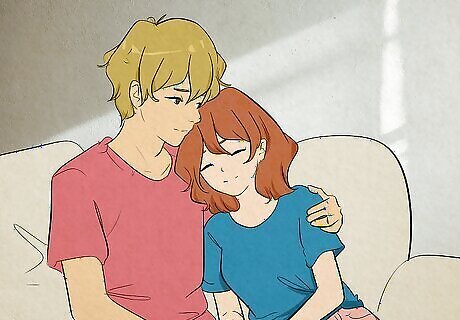
They want to be emotionally close to their love interest. The deredere archetype is connected to the idea of “amae” (甘え), which essentially means “to depend on emotionally” or “to desire close contact and affection.” They’ll often try to cuddle with their love interest or get physically close to them; additionally, they’ll look for emotional affection and comfort when they’re feeling down. Deredere appreciate being vulnerable and letting their guard down around their “person.” Other “dere” types can be amae towards a love interest, too—but for them, it’s usually more of a struggle, whereas deredere love emotional intimacy and being able to depend on another person.
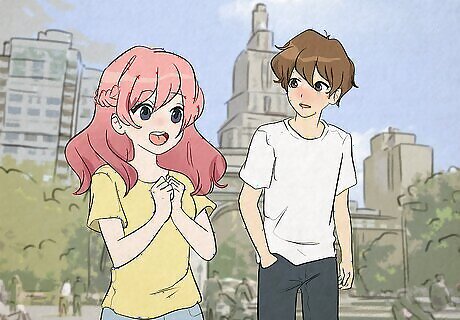
They aren’t afraid to show their feelings. As we’ve mentioned already, deredere characters are super open with their affection. While other “dere” types have additional traits that can disguise the softer side to their personality, deredere characters don’t—they’re 100% sweet, genuine characters who wear their hearts on their sleeve. They may not confess their feelings immediately, but it’s still pretty obvious they’re in love. Additionally, deredere don’t lie about their feelings—so, when it’s time to come clean (or when it’s called out), they will be totally honest about their romantic feelings. Plus, even if a deredere character hasn’t said “I love you” yet, they’ll still show the world how they feel by treating their love interest with unfiltered affection. For instance, a deredere might instantly become overjoyed when their love interest approaches or blush at the things they say. It’s even common for deredere characters to be visually depicted with hearts in place of their eyes!
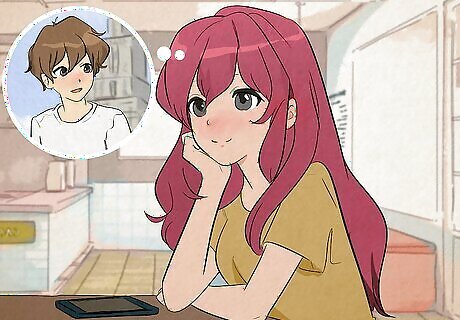
They think about their love interest all the time. “Out of sight, out of mind” just isn’t an option for deredere characters. They’re always thinking about their love interest and how much they want to be with them, and they’ll make sure the love interest knows it, too. Deredere crave their love interest’s attention, and they’ll turn on their deredere charm anywhere—in public or in private. While some people might be cautious or embarrassed about their feelings, deredere characters aren’t. They’re always in that affectionate, lovey-dovey state of mind!
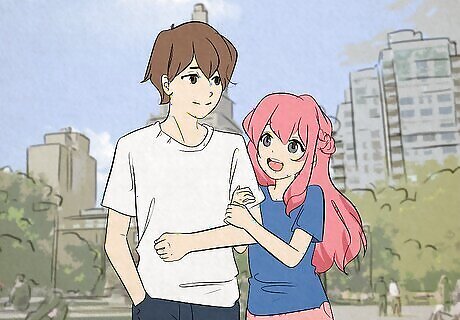
They can be clingy. Deredere characters want to spend as much time as possible with their love interest, even better if it’s time alone. They’ll find different ways to stick close to their love interest—showering them with compliments, telling them how much they love them, or getting physical (hugging, cuddling, and other displays of affection). Basically, deredere just want their partner to feel loved, and they’ll show it any way they can. Generally, deredere characters are just happy to be around their love interest—what they do together and where they go are insignificant details!
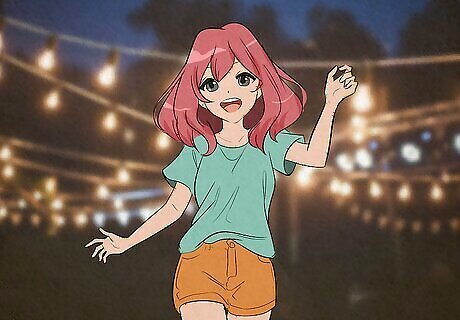
They’re usually likable and easy to get along with. A deredere character’s kindness and thoughtfulness don’t stop at their love interest; they’ll show anyone kindness. Additionally, because deredere characters are so open and communicative, getting along with them usually isn’t hard for other character archetypes. Deredere aren’t fake or two-sided—what you see is what you get!
Meaning & Etymology of “Deredere”
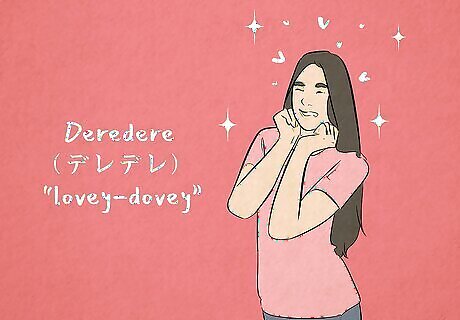
“Deredere” is a Japanese onomatopoeia. The word deredere (デレデレ) translates to “lovey-dovey” or “lovestruck.” It’s both an onomatopoeia and an adverb, describing the act of being romantic and affectionate toward someone, giving them lots of attention and doting on them to earn their love in return. When someone acts deredere, they’re basically showing their romantic interest and affection in a very open, cutesy way. Deredere behavior is also sometimes described as rabu-rabu (ラブラブ), which means “head over heels in love,” or being so in love with a person that you can’t stop thinking about them. Deredere behavior is also connected with terms like kawaii (acting cute and lovable), ama-ama (excessively sweet and affectionate), and icha-icha (lovey-dovey, or how couples act intimate—kissing, cuddling, touching, and so on).
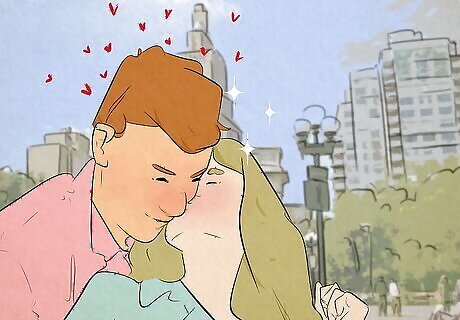
“Deredere” can also be translated to “spoony.” The spoony version of deredere essentially describes someone overly affectionate or someone who acts in a cute, silly way because they’re so head over heels in love. It can also describe couples—specifically, couples who are very openly affectionate and sweet with one another, acting infatuated and sentimental. Thus, the overall deredere archetype applies to characters who are open, affectionate, sentimental, loving, and adorable, letting their emotions guide their behavior.
History of “Deredere”
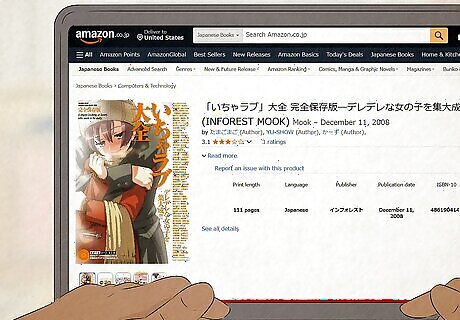
The first use of “deredere” as a character archetype occurred in 2008. The word deredere has been around much longer, but it became a character archetype officially in 2008; it was derived from the “tsundere” archetype after tsundere became an increasingly popular term. Tsundere refers to a character who starts out being tsun and evolves into dere, while deredere was used to refer to characters with no other sides masking their emotions—in other words, all dere. The first media to use deredere as an archetype was the 2008 romance magazine Complete Encyclopedia: A Collection of Deredere Girls!! The magazine included a collection of short stories about “deredere” characters who were very affectionate and romantic toward one another.
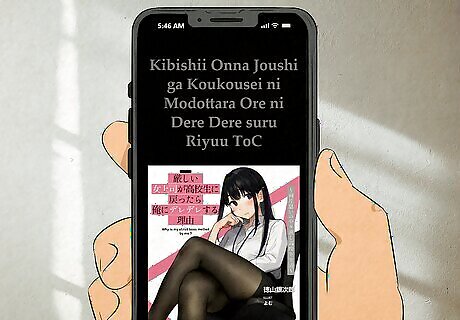
Since then, the deredere archetype has become super popular. In addition to fans everywhere using deredere to describe characters in too many shows, movies, and books to count, certain anime and manga series have actually used it themselves. For example, it appears in the 2023 romance manga The Reason Why My Strict Female Boss Will Deredere to Me When I Go Back to High School: Redoing the High School of Two Unrequited Loves. Another instance of deredere in a title comes from the 2021 romance novel series Only MOB characters can WIN! Is it true that one of you is going to become my deredere wife?
Examples of Deredere Characters in Anime & Manga

It’d be tough to round up every deredere character in existence (since there are so many to choose from). Nonetheless, here are a few of the most famous or beloved deredere characters from anime and manga series like My Hero Academia, Fruits Basket, and beyond: Ochaco Uraraka (My Hero Academia) Tohru Honda (Fruits Basket) Mitsukuni Haninozuka (Ouran High School Host Club) Yui Hirasawa (K-ON!) Ahiru (Princess Tutu) Usagi Tsukino (Sailor Moon) Orihime Inoue (Bleach) Emma (The Promised Neverland) Anna Yamada (The Dangers in My Heart) Eru Chitanda (Hyouka)
Other Dere Types in Anime & Manga
Bakadere (バカデレ)Bakadere is a term derived from baka, which means “idiot” or “fool” in Japanese. While kind and good-natured, bakadere characters are also clumsy, forgetful, and scatterbrained, stumbling into accidents without meaning to. They’re also a bit obtuse when it comes to romance and tend not to notice when someone has feelings for them. Examples: Maron (Dragon Ball Z) Ryuunosuke Tanaka (Haikyuu!!) Yoshiko Hanabatake (Aho Girl)
Dandere (ダンデレ)Dandere is derived from the Japanese danmari, which means “taciturn” or “silent.” Thus, dandere characters are definitely the silent type; they’re quiet, rarely speak unless spoken to, and don’t like to speak much even when they do open their mouths. They start to come out of their shells when alone with someone they truly feel comfortable around. Hinata Hyuga (Naruto) Kanao Tsuyuri (Demon Slayer) Megumi Tadokoro (Food Wars!)
Dorodere (ドロデレ)Dorodere comes from the Japanese word dorodoro, which means “muddled.” Dorodere characters act kind and friendly to everyone, but tend to hide their feelings behind a mask, making it difficult for other characters to really tell what they’re thinking about or feeling.
Goudere (豪デレ)Goudere likely comes from the term gou gou, meaning “boisterous” in Japanese. And goudere characters are boisterous; they almost obsessively try to impress their love interest, catering to all of their whims and needs (whether or not the love interest asks them to). They’re also prone to making silly mistakes because they’re so desperate to please.
Himedere (ヒメデレ)Himedere comes from the Japanese word hime, which means “princess.” Fittingly, himedere characters are typically very arrogant and entitled, demanding attention from others and expecting the best of everything. They want to be treated like actual princesses, even if they aren’t actually noble or royalty. Examples: Erina Nakiri (Food Wars) Mary Saotome (Kakegurui) Rurichiyo Kasumioji (Bleach) The male version of himedere is oujidere—referring to characters who expect to be treated like princes.
Hiyakasudere (ヒヤカスデレ)Hiyakasudere is a term derived from the verb hiyakasyu, meaning “to tease” in Japanese. Thus, hiyakasudere characters are also sometimes called “teasedere,” because they love teasing their love interests and acting flirtatiously. Hiyakasudere characters are playful, but rarely perverted or harmful; they just enjoy flirting! Examples: Hikaru and Kaoru (Ouran High School Host Club) Nagatoro (Don’t Toy With Me, Miss Nagatoro) Shigure Sohma (Fruits Basket)
Kuudere (クーデレ)Kuudere is actually based on the Japanese pronunciation of “cool”; the kuudere archetype describes characters who are calm and cool, even in the most intense, stressful situations. They often seem emotionless, speaking in monotones and maintaining a cold persona. Nonetheless, they soften and show affection to specific people (usually a love interest). Examples: Kikyo (InuYasha) Mikasa Ackerman (Attack on Titan) Shoto Todoroki (My Hero Academia)
Shundere (シュンデレ)Shundere comes from the Japanese shun, an onomatopoeia that describes being down, gloomy, or upset. And shundere characters definitely have a major gloomy side; as an archetype, these characters tend to be somber and melancholy a lot of the time, even when everyone else around them is perfectly happy. Examples: Megumi Hanajima (Fruits Basket) Sawako Kuronuma (Kimi ni Todoke) Tomoko Kuroki (Watamote)
Tsundere (ツンデレ)Tsundere is one of the most notorious dere types of all! The term is derived from the Japanese onomotopoeia tsun tsun, which describes turning away in disgust. Tsundere characters are, consequently, very harsh and difficult to get along with. They usually display unwarranted hostility toward their love interests, but get embarrassed and soften when shown affection. Edward Elric (Fullmetal Alchemist: Brotherhood) Kyo Sohma (Fruits Basket) Shana (Shakugan no Shana) Want to know where dere type you’d be? Take our dere type quiz to find out!
Yandere (ヤンデレ)One of the more disturbing dere types, yandere refers to extreme characters who get unhealthily obsessed when in love. The term is derived from the Japanese word yanderu, meaning “to be mentally sick.” As such, yandere characters will go to any lengths to be with those they love—even lie, manipulate, commit violence, or kill. Examples: Akito Sohma (Fruits Basket) Misa Amane (Death Note) Shuu Tsukiyama (Tokyo Ghoul)















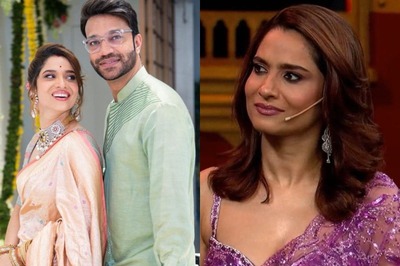

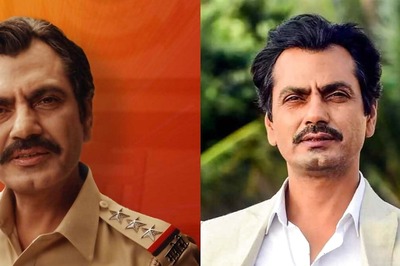

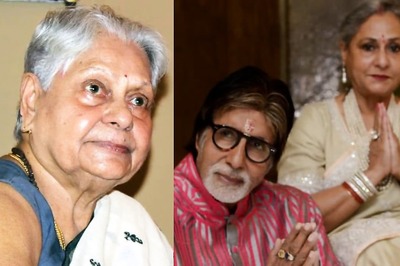
Comments
0 comment